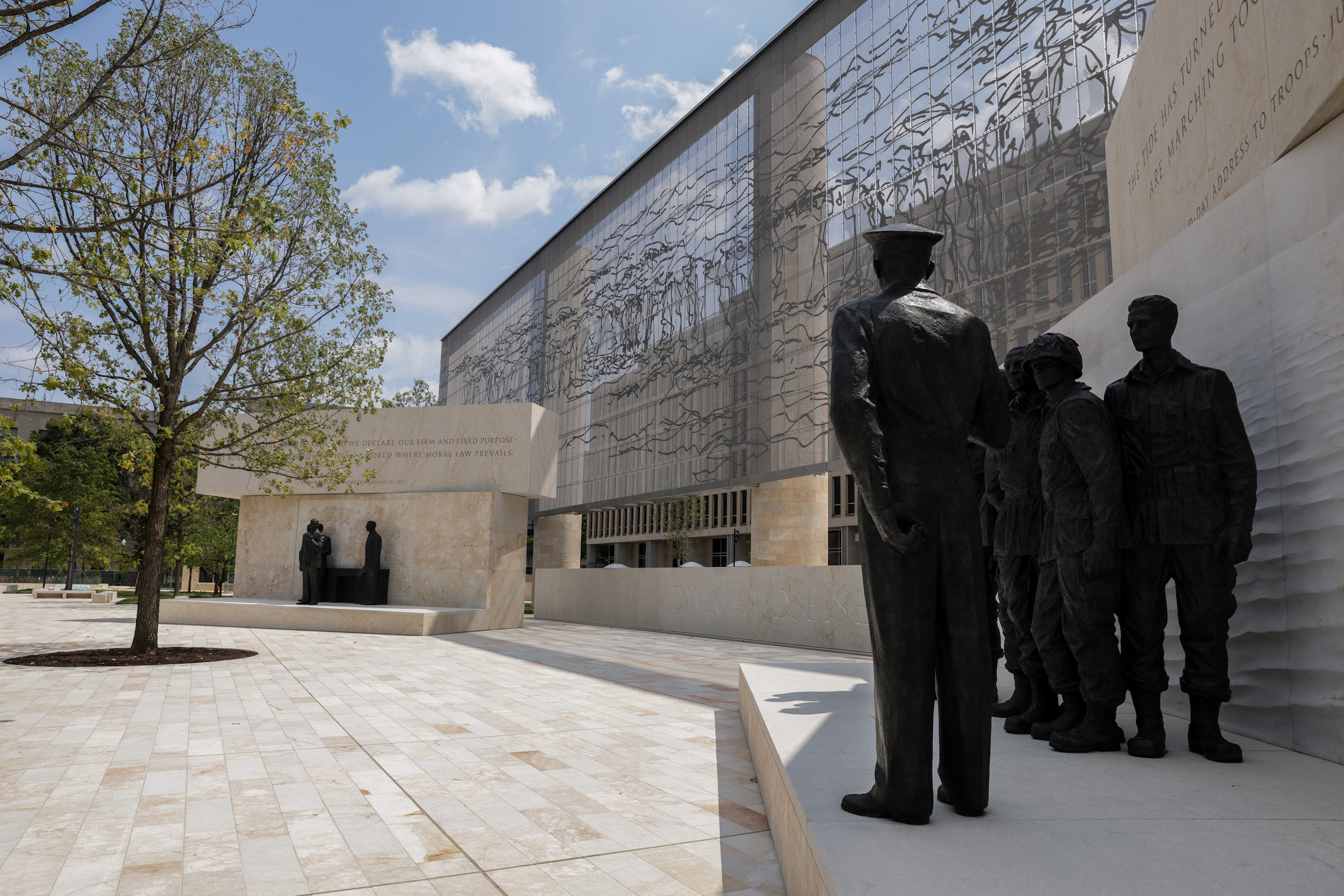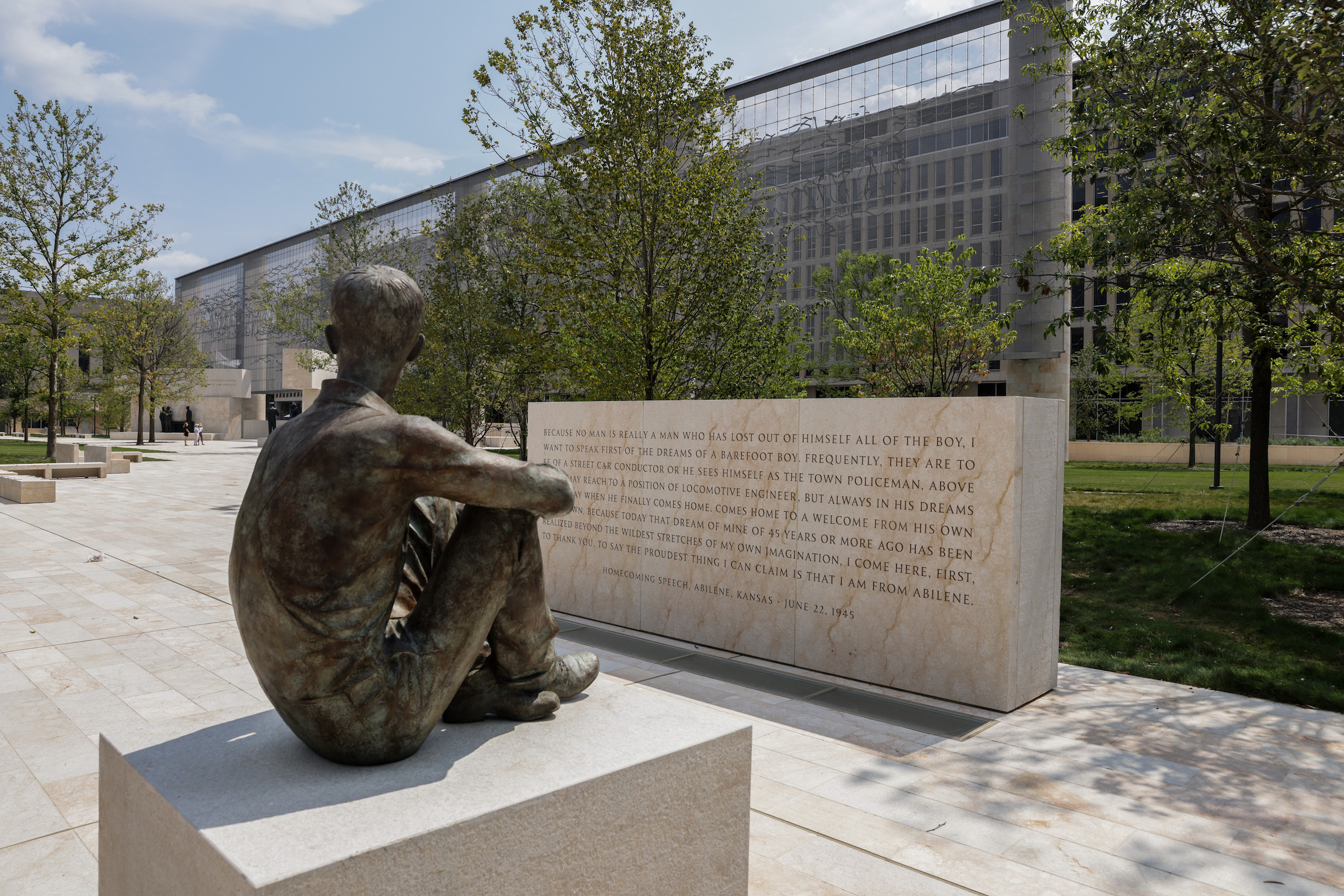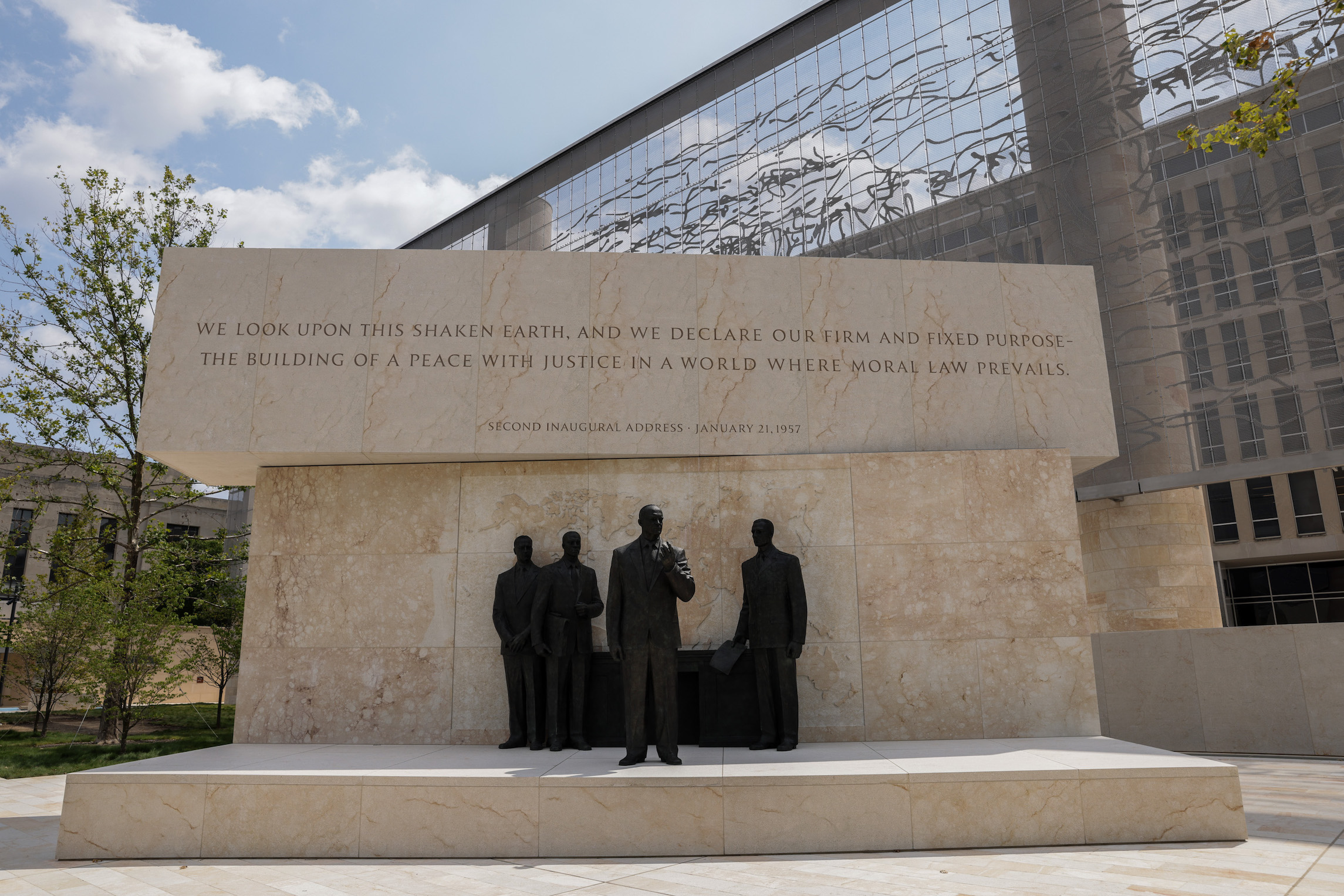Following a summer of bureaucrats and mobs working to remove statues and other tributes, a memorial to President Dwight D. Eisenhower will open on the National Mall this week.
On a four-acre patch of land, the memorial honors both Eisenhower’s accomplishments as a five-star Army general who was supreme commander of the Allied forces in Europe during World War II and his legacy as president.
The star of the memorial park, designed by modern architect Frank Gehry of the Beekman Tower in New York and the Walt Disney Concert Hall in Los Angeles, is a stainless steel “tapestry” 450 feet long and 60 feet high depicting the coastline in Normandy, France, during peacetime. While it is difficult to view up close in the daytime, the hand-drawn sketch-turned-metal artwork is stunning when it lights up at night.
The memorial’s opening was originally scheduled for early May but was delayed due to the coronavirus pandemic.
Now, it is a strange political environment during which to open a presidential memorial.
This summer, protests about policing and racism reignited pushes to remove numerous statues and memorials deemed racist or otherwise politically incorrect. The focus was mostly on removing those honoring Confederate figures, but some activists extended the push in the hopes of removing tributes to former presidents and other widely celebrated figures.
A direct descendant of President Thomas Jefferson this summer called on his Washington memorial to be removed and replaced with one to abolitionist Harriet Tubman. A committee reporting to the mayor of Washington recommended that the government “remove, relocate, or contextualize” landmarks in the city that include the Washington monument, the Jefferson Memorial, and a statue of Benjamin Franklin.
Eisenhower has not been a target of racial justice protesters. During his presidency, he sent federal troops to Little Rock, Arkansas, to enforce the Supreme Court’s order to desegregate schools and signed into law the first civil rights legislation since Reconstruction. When ranking the presidents, historians often put him near the top of the list.

But the opening of the memorial in this environment raises questions about the purpose of a tribute to a historical figure.
Kansas Sen. Pat Roberts, chairman of the Eisenhower Memorial Commission, called memorials the “intersection of memory and history.”
“They are exceedingly important because they encourage people to learn about history,” Roberts told the Washington Examiner. “These kind of memorials, especially this one, not only do they commemorate our shared past, they also commemorate the country’s architectural and artistic heritage.”
As for calls to tear down monuments to Washington and Jefferson, “I think the great majority of Americans certainly do not agree with that,” said Roberts, who is retiring in early January after 40 years in Congress.
Before this summer’s racial justice protests called into question the importance of memorials, the Eisenhower memorial faced its own controversy.
Two granddaughters of the 34th president, Susan and Anne Eisenhower, voiced criticisms about the memorial’s design nearly a decade ago.
They worried about whether Gehry’s tapestry would stand the test of time and that it and the giant, 80 feet high and 10 feet wide columns in the park would remind people of missile silos, a kind of Iron Curtain, or evoke comparisons to communist tapestries or fences around Nazi concentration camps. They disliked the depiction of Eisenhower as a young boy in Kansas, preferring to keep the focus on his accomplishments, such as leading the United States as it became a global superpower in the modern age.

The family, though, is now supportive of the memorial and its design.
Under the metal tapestry, Eisenhower is depicted in two bronze scenes that represent the biggest roles of his life, as supreme commander and as president. On the reverse side are excerpts from key Eisenhower speeches, including the line about the “military-industrial complex” in his farewell speech.
Surrounding the memorial are reminders of Eisenhower’s presidential legacy: headquarters for the departments of Education and Health and Human Services, both of which grew out of the Department of Health, Education, and Welfare that started under Eisenhower. Across the street is the Air and Space Museum. The Federal Aviation Administration and NASA were both established during his administration.
A patch of grass that marks the original plan for Maryland Avenue runs through the four-acre area, and that along with numerous trees and benches make the parklike atmosphere feel like a rather understated memorial to Eisenhower.

“I’m … probably one of the few members of Congress who actually met Eisenhower,” Roberts said. His father, Charles Wesley Roberts, was chairman of the Republican National Committee, and the now-Kansas senator met Eisenhower at the party’s 1952 convention. “Both times when I met him, I had my back to him when he came in the door, but you knew he was there. He had a definite charisma.”
The memorial opens to the public on Friday afternoon, and a dedication ceremony will take place on Thursday. Reusable face masks printed with the Eisenhower presidential campaign slogan “I like Ike” will be handed out to attendees.
A guided audio tour is available to those who visit the memorial. The six sections of the tour, ranging from 5 to 10 minutes each, are available on the memorial’s website and on major podcast hosting platforms.
“He achieved what everybody hopes the president will, and that’s eight years of peace and prosperity. He brought the country together,” Roberts said. “That kind of leadership is somewhat unique.”

